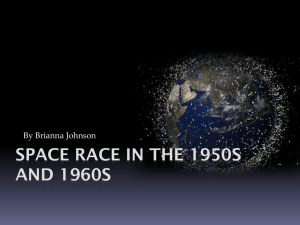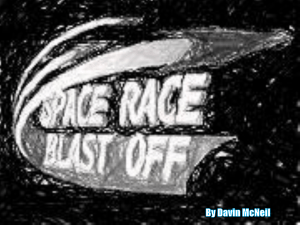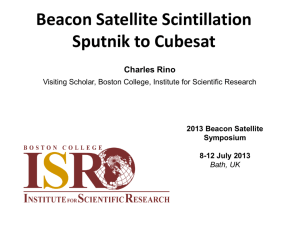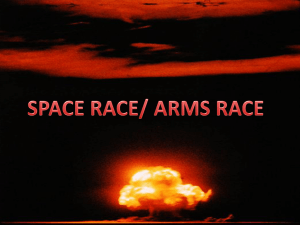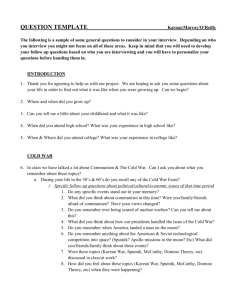October Sky
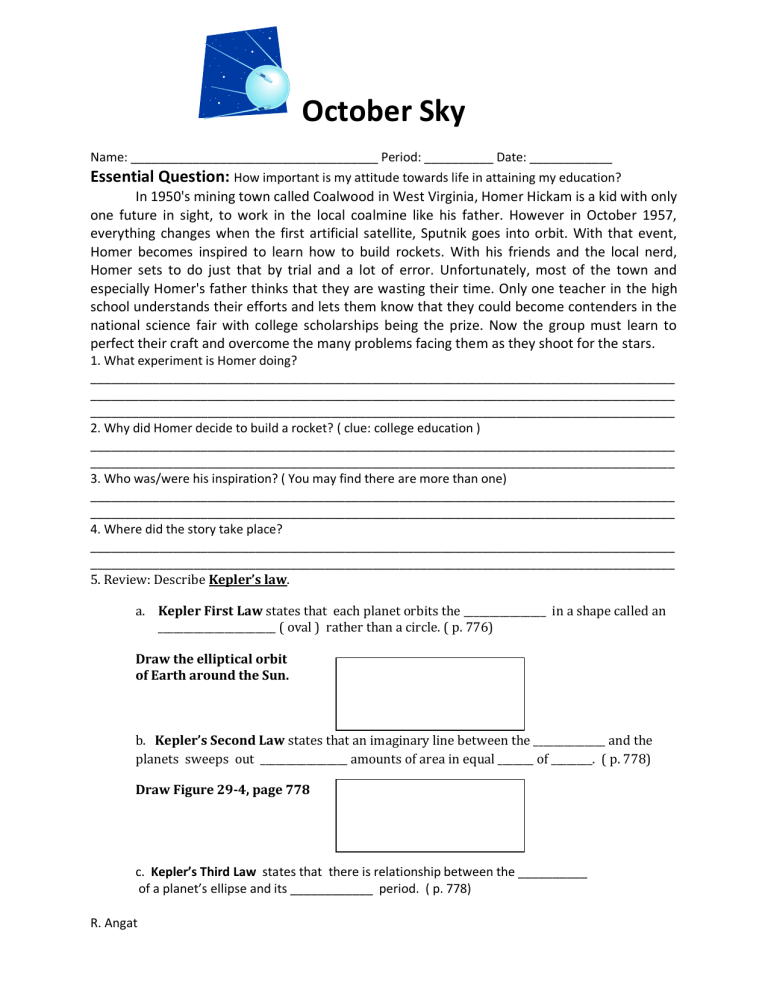
October Sky
Name: ____________________________________ Period: __________ Date: ____________
Essential Question:
How important is my attitude towards life in attaining my education?
In 1950's mining town called Coalwood in West Virginia, Homer Hickam is a kid with only one future in sight, to work in the local coalmine like his father. However in October 1957, everything changes when the first artificial satellite, Sputnik goes into orbit. With that event,
Homer becomes inspired to learn how to build rockets. With his friends and the local nerd,
Homer sets to do just that by trial and a lot of error. Unfortunately, most of the town and especially Homer's father thinks that they are wasting their time. Only one teacher in the high school understands their efforts and lets them know that they could become contenders in the national science fair with college scholarships being the prize. Now the group must learn to perfect their craft and overcome the many problems facing them as they shoot for the stars.
1. What experiment is Homer doing?
_____________________________________________________________________________________
_____________________________________________________________________________________
_____________________________________________________________________________________
2. Why did Homer decide to build a rocket? ( clue: college education )
_____________________________________________________________________________________
_____________________________________________________________________________________
3. Who was/were his inspiration? ( You may find there are more than one)
_____________________________________________________________________________________
_____________________________________________________________________________________
4. Where did the story take place?
_____________________________________________________________________________________
_____________________________________________________________________________________
5. Review: Describe Kepler’s law . a.
Kepler First Law states that each planet orbits the ________________ in a shape called an
_______________________ ( oval ) rather than a circle. ( p. 776)
Draw the elliptical orbit of Earth around the Sun. b. Kepler’s Second Law states that an imaginary line between the ______________ and the planets sweeps out _________________ amounts of area in equal _______ of ________. ( p. 778)
Draw Figure 29-4, page 778 c. Kepler’s Third Law states that there is relationship between the __________
of a planet’s ellipse and its ____________ period. ( p. 778)
R. Angat
6. What country launched the world's first man-made satellite, Sputnik, into Earth orbit on October 4,
1957?
_____________________________________________________________________________________
_____________________________________________________________________________________
7. Because Sputnik travels at 18,000 mph, it can make an orbit of Earth every _______ minutes.
8. Satellites passing overhead are visible in a clear dark sky one hour after ________ and one hour before ________.
9. Sputnik travels at a height of ____________ miles above the Earth.
10. Describe what Sputnik looked like passing through the sky:
_____________________________________________________________________________________
_____________________________________________________________________________________
11. What did Homer use as the fuel for his first rocket?
_____________________________________________________________________________________
12. What caused the death of Homer’s dad?
_____________________________________________________________________________________
_____________________________________________________________________________________
13. What happened to the “rocket boys” as a result of this experiment?
_____________________________________________________________________________________
_____________________________________________________________________________________
14. Why should you keep on striving towards your dream?
_____________________________________________________________________________________
_____________________________________________________________________________________
_____________________________________________________________________________________
15. Review: Define barycenter. Explain why the barycenter of the Earth and the Moon is 1700 km beneath earth’s surface. Think! 15 pts .
The barycenter is the point in space around which two objects orbit. For the
Moon and Earth, that point is about 1000 miles (1700 km) beneath your feet, or about three-quarters of the way from the Earth’s center to its surface. That means the Earth actually wobbles around a point deep in its interior, pulled around by the
Moon.
_________________________________________________________
_________________________________________________________
_________________________________________________________
_________________________________________________________
16. Review: It was dark when the citizens of Coalwood, West Virginia were waiting to have a glimpse of
Sputnik. Explain what causes day and night using the following vocabulary words: ( earth, rotation, sun,
24 hours , barycenter). UNDERLINE THE VOCABULARY WORDS IN YOUR ANSWER. Think! 15 pts .
_____________________________________________________________________________________
_____________________________________________________________________________________
_____________________________________________________________________________________
_____________________________________________________________________________________ http://www.imdb.com/title/tt0132477/plotsummary ( edited) http://www.NewYorkScienceTeacher.com/movies http://www.education.com/science-fair/article/barycenter-balancing-point/
R. Angat
Summary of clip: The clip shows citizens of Coalwood, West Virginia outside watching Sputnik traverse the October Sky. A vintage radio broadcast plays in the background. The crowd watches the satellite in awe.
Connection of flickclip to the concept: The radio broadcast states that the Russian satellite is traveling at a speed of 18,000mi/hr with an orbital period of 96 minutes. With these data, students can compute Sputnik's altitude and compare it to the value Quentin later gives in the movie.
Students can also determine the mass of Sputnik and what type of orbit
Sputnik is in. This is a good example of Newton's Second Law when applied to uniform cirucular motion.
http://www.flickclip.com/flicks/octobersky1.html
Because Sputnik travels at 18,000 mph, it can make an orbit of Earth every __96___ minutes.
Satellites passing overhead are visible in a clear dark sky one hour after _sunset__ and one hour before _dawn____.
Sputnik travels at a height of _500_____ miles above the Earth.
10 Things You Didn't Know About
Sputnik
By Danielle Burton Sept. 28, 2007 SHARE
Compiled by the U.S. News library staff
1. The former Soviet Union launched Sputnik I, the first man-made satellite, on Oct. 4, 1957.
2. The satellite was the size of a basketball and weighed approximately 180 pounds.
3. It traveled at 18,000 mph, 500 miles above the Earth's surface.
R. Angat
4. It orbited the Earth every 98 minutes, flying over the United States seven times a day.
5. Shortly after its launch, the New York Times explained that the literal translation of "sputnik" is
"something that is traveling with a traveler." Additionally, "the traveler is the earth, traveling through space, and the companion 'traveling with' it is the satellite."
6. Carrying only a simple radio transmitter, the satellite emitted a "beep...beep...beep" signal back to
Earth for 23 days, until Oct. 27, 1957 —when its battery reportedly died.
7. Sputnik remained in orbit until Jan. 4, 1958, when it re-entered and burned up in Earth's atmosphere.
8. Sputnik II was launched on Nov. 3, 1957, carrying the first living thing into space: a dog named
Laika. This satellite was six times as heavy as the first, coming in at over 1,100 pounds.
Unfortunately, there was no plan in place to get the dog safely back to Earth, and it died in space.
9. Americans were caught off guard by these Soviet advances, occurring at the height of the Cold
War. Wonder and awe over the technological advancements combined with feelings of panic and paranoia. Many wondered whether the Soviets now had the ability to launch missiles that could reach the United States. Many also wondered how long it would take the United States to catch up.
10. In response, the space race between the two countries heated up. The United States stepped up its own space plan, launching its first satellite (the Explorer I, which discovered the Van Allen radiation belts) on Jan. 31, 1958. Later that year, Congress passed the National Aeronautics and
Space Act, which created NASA.
Sources:
Encyclopedia Britannica Online
NASA, National Aeronautics and Space Administration
New York Times http://www.usnews.com/news/world/articles/2007/09/28/10-things-you-didnt-know-about-sputnik
Van Allen radiation belt: http://www.youtube.com/watch?v=sF_Gbs1yj6w
R. Angat


